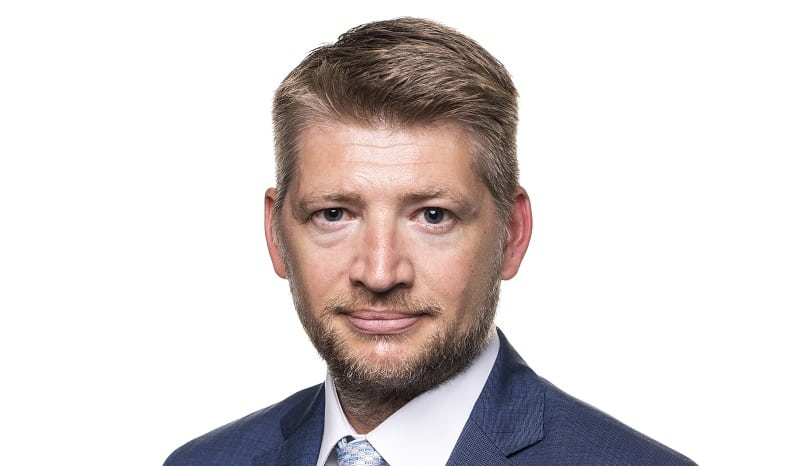This week marks one month since Russia invaded Ukraine and the impact on global emerging market funds has, unsurprisingly, been dramatic.
Between 24 February and 21 March 2022, Comgest Growth Emerging Markets has taken the biggest hit, falling by 11.3%, followed closely by Polar Capital Emerging Market Stars (-11.2%), according to data from FE Fundinfo.
The average fund in the IA Global Emerging Markets sector has lost 2.8%. Of the 155 funds comprising the universe, only 22 stayed above water and managed to deliver a positive return over the past month.
Top 10 worst performing IA GEM funds
| Performance 24 Feb to 21 Mar ’22 (%) | |
| Comgest Growth Emerging Markets | -11.34 |
| Polar Capital Emerging Markets Stars | -11.22 |
| TT Emerging Markets Equity | -11.10 |
| TT Emerging Markets Unconstrained | -11.09 |
| Gam Sustainable Emerging Equity | -9.88 |
| Artisan Sustainable Emerging Markets | -9.52 |
| iShares Emerging Markets Dividend Ucits ETF TR | -8.52 |
| Invesco Responsible Emerging Markets Innovators Equity | -8.36 |
| UBS Global Emerging Markets Opportunity | -7.50 |
| Vontobel mtx Sustainable Emerging Markets Leaders | -7.33 |
Source: FE Fundinfo
Russia is totally uninvestable
Exposure to Russia (and Ukraine) will have hurt performance but what can emerging market fund managers do to reduce volatility given they can’t sell down their Russian assets?
Jorry Nøddekær (pictured), lead fund manager of the Polar Capital Emerging Market Stars fund, says: “We had two small positions in Russia, which we had been trimming, in the lead up to the invasion of Ukraine – Yandex (internet and technology) and TCS (fintech) – and just prior to the announcement of Russian forces crossing the border we took the decision to fully exit both.”
He adds: “We were able to trade out of these positions in relatively good time before the sell-side stopped trading Russian equites. We consider Russia totally uninvestable as long as Vladimir Putin and his regime are in power. We did get a helping hand for our relative performance from not owning any of the large Russian benchmark names or anything in Eastern Europe.”
See also: FCA mulls ‘side pocket’ solution for retail funds with illiquid Russian assets
Michael Bourke, head of global emerging market equities at M&G explains that on 25 February 2022, the fund’s exposure to Russia sat at single digit percentage points of its net asset value and, since then, all remaining positions in Russian companies have been marked to zero.
“As a global strategy, it has limited indirect exposure to companies impacted by the war in Ukraine and exposures to the energy sector-which are not linked to Russia-have held up well in the current environment.”
Chinese tech valuations look attractive
Outside of Russia and Ukraine, Bourke points out that Chinese equities have struggled this year amid myriad concerns such as the slowing domestic economy, the ongoing regulatory clampdown and a surge in Covid-19 cases and new lockdowns rattling investors.
“However, we have seen a dramatic rebound in Chinese stock markets following supportive comments from policymakers.
“Chinese equities, especially US-listed Chinese stocks (ADRs), remain significantly below their peaks around a year ago. As a result, we think offshore-listed Chinese companies are now trading at very attractive valuations, compared to their history and relative to emerging markets and developed markets, and many offer attractive dividend yields.”
In light of the headwinds outlined above, Bourke understands why some investors have concerns, but he has been gradually increasing allocation to China as he has seen more value emerge over the past year. “Following the recent share price falls, we have been buying more shares in our Chinese internet and biotech stocks.”
Tom McGrath, fund manager of the 8AM Growth fund – which currently has around 3% exposure to global emerging markets – sees similar positives to Bourke and warns against an impulsive exit from the asset class.
“Clearly any funds with Russian exposure have been absolutely hammered this year and many global emerging market funds have suffered accordingly. The sell-off in Chinese equities, especially technology companies, has also dragged down many emerging markets funds, but the sector as a whole hasn’t fallen any more than the European equity sector so I think it is a bit premature to right off the whole massive geographical sector.”
See also: Headwinds fail to dampen China’s long-term appeal
Commodity rich nations have been resilient
As McGrath points out, we have already witnessed a rapid rebound in Chinese technology and he thinks this sector continues to offer the potential for high risk returns particularly given the huge discount to equivalent US companies.
“Some emerging markets, especially the commodity rich nations will actually do quite well from the scarcity the war will create. Unnoticed, Brazil is up 25% this year for instance. So at 8AM we are maintaining our emerging markets exposure at current levels.”
He adds that if, as looks increasingly likely, the war in the Ukraine turns out to be a long drawn-out affair, then oil and food prices could remain elevated longer than markets expect.
“In such an environment, Blackrock World Energy could continue to perform well and another less known fund, the Barings Agriculture fund could offer investors a way of participating in the rise in food prices and greater strain on global farming.”
Reducing volatility
Nøddekær at Polar Capital thinks efforts to reduce volatility are far from straightforward.
“What do emerging markets look like following the Russian invasion of Ukraine from a more structural perspective? Are there key short to medium-term cyclical implications? Answering these questions comes with a high degree of uncertainty given how fluid the situation remains, so as portfolio managers we continue to consider a range of scenarios and remain agile.”
He suggests a key weapon in this new Cold War will be technology. He also sees trade becoming more US-biased in the years to come.
“Structurally, we see a strong outlook for many Asian technology companies. This is also why we have a large amount of exposure to this area in the portfolio, as we see attractive structural growth at very attractive valuation levels. Given the panic in the market, structural growth is becoming cheaper, so we retain our conviction in this space at what now are more attractive levels.”
Emma Wall, head of investment analysis and research at Hargreaves Lansdown makes an interesting point that a great many funds – active and passive – with Russia exposure, have taken the decision to value these assets at zero.
This means much of the pricing volatility associated with direct assets has already been removed.
“The remaining risk, therefore, is one of contagion and association, both in terms of negative impact from Russian-revenues and indeed positive volatility in the case of alternative natural resources and commodity providers in Latin America and Australasia,” she says.
“Diversification helps to mitigate these risks, which is why for many retail investors a broad-based emerging market fund, rather than country specific instruments are the better option.”
Wall picks out two funds for particular mention. “JPMorgan Emerging Markets sold its only Russian equity in February, and has made a commitment not to buy any more Russian equities under this regime. It is run by a manger with high conviction.”
She adds: “A good broad-based tracker, which does have some Russia exposure, but the geographical diversity helps to mitigate volatility would be iShares Emerging Markets Equity.”
Top 10 worst performing IA GEM funds
| Performance 24 Feb to 21 Mar ’22 (%) | |
| SSGA SPDR MSCI Emerging Markets Small Cap Ucits ETF | 2.89 |
| iShares MSCI Emerging Markets SmallCap Ucits ETF TR | 2.88 |
| BNY Mellon Emerging Income | 2.71 |
| BMO Emerging Markets Equity | 1.62 |
| SVS Aubrey Global Emerging Markets | 1.19 |
| Aberdeen Standard Sicav I Emerging Markets Sustainable Development Equity | 1.07 |
| Aubrey Global Emerging Markets Opportunities | 1.01 |
| Pictet Quest Emerging Sustainable Equities | 0.99 |
| Dimensional Emerging Markets Core Equity | 0.97 |
| iShares MSCI EM SRI Ucits ETF | 0.87 |
Source: FE Fundinfo
See also: Quilter and Schroders stung by ex-Woodford Russian property holding







